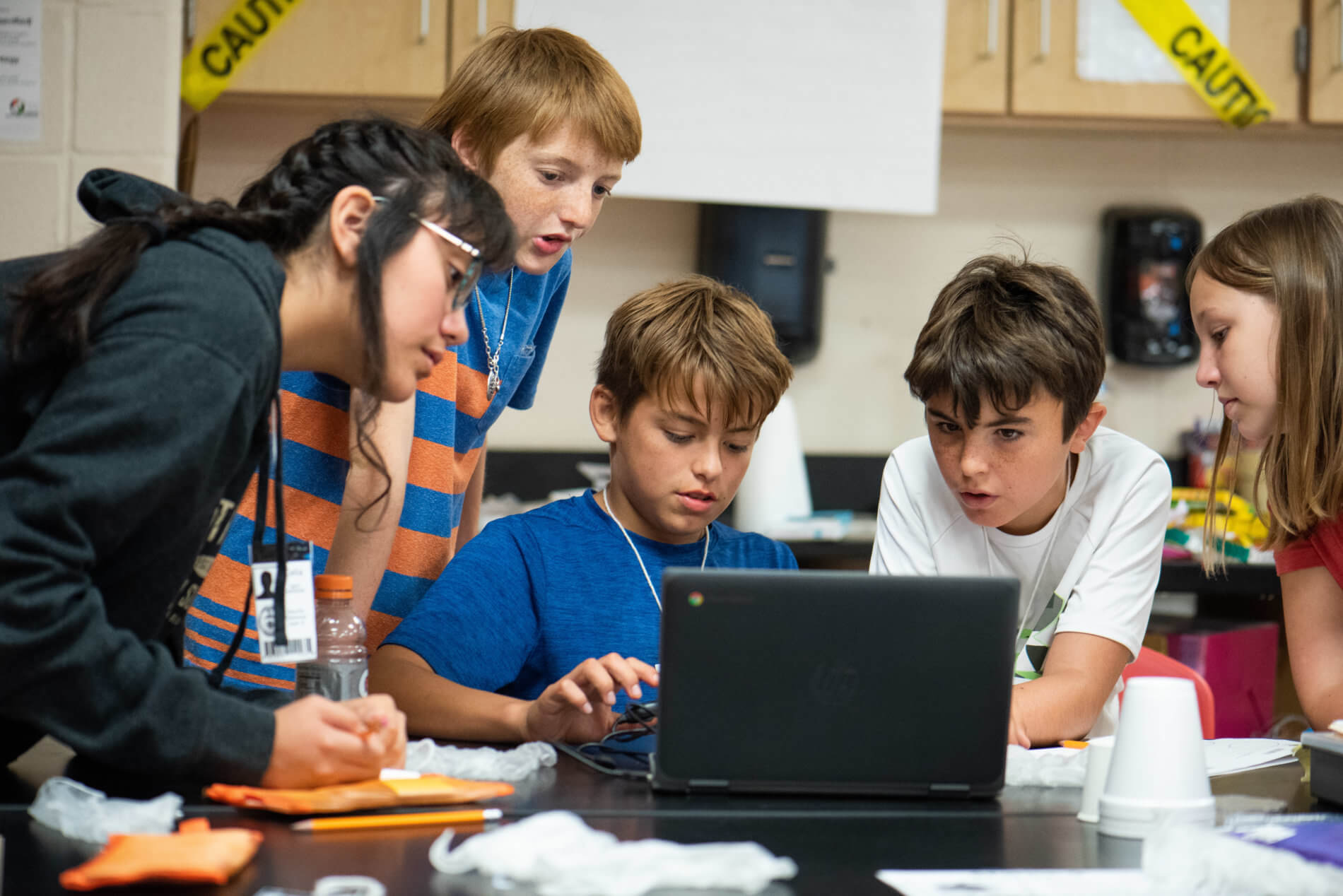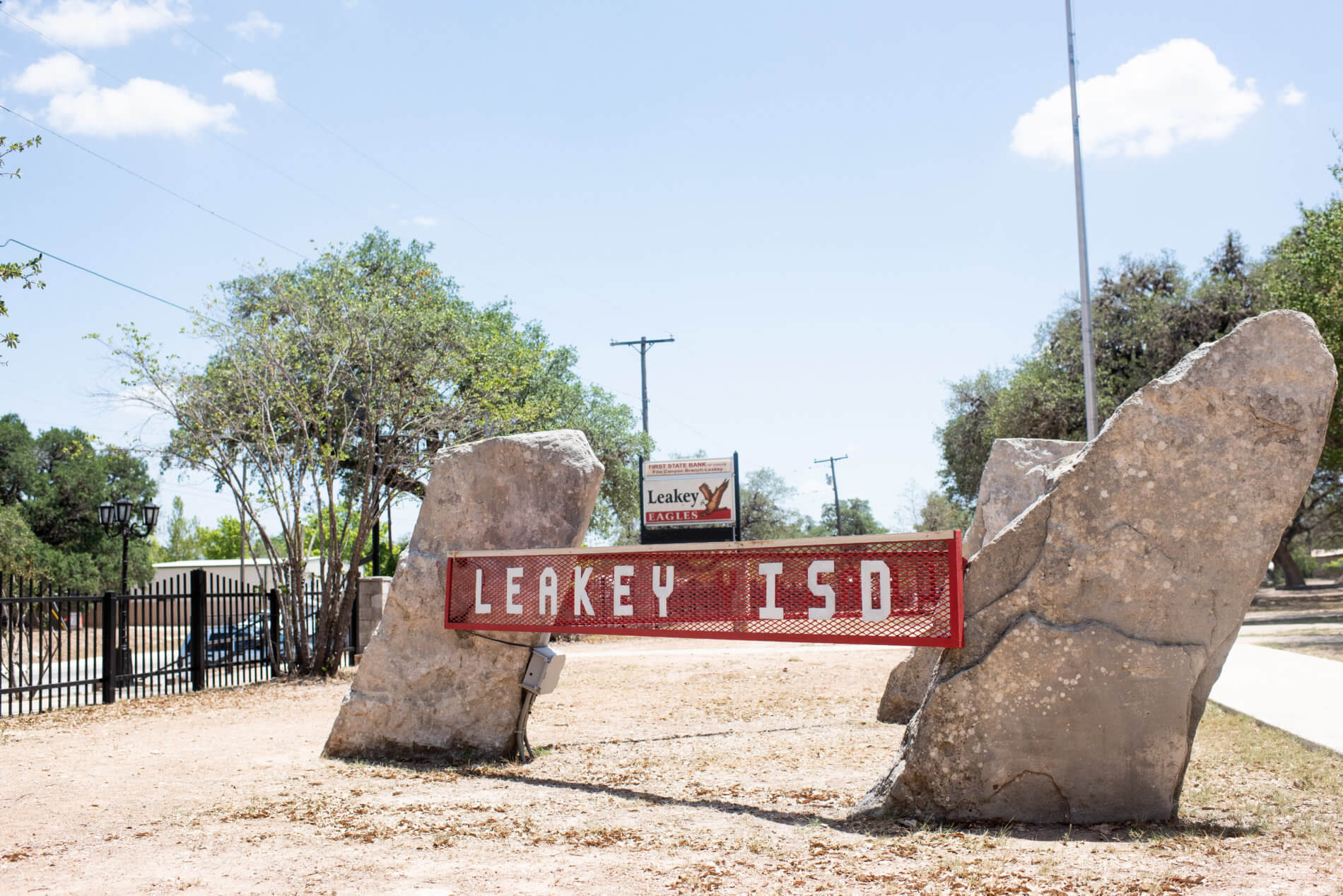

LOCAL RURAL LEADERS LIKE CHRIS YESCHKE REMIND FOLKS THAT BEING REMOTE IS NOT A LIABILITY, BUT AN ASSET.
“This is where I interview potential teachers,” Chris Yeschke told me as he set down his grilled chicken sandwich and fried green beans at the Bent Rim Grill in Leakey. Yeschke is Leakey ISD’s superintendent, and we were there to talk rural development and education while his wife led STEM camp for forty students.
That number may not seem like a big deal, but for Leakey ISD, just 14 few miles down Highway 83 from the H. E. Butt Foundation Camp, forty students means the enrichment opportunity served more than 10% of their student population, not including older students who served as mentors to the younger students.
Two Leakey ISD teachers, Monica Leiker and Valerie Yeschke, led the camp in partnership with the Science Mill in Johnson City. Last year, the H. E. Butt Foundation connected the two organizations as part of our rural development work through the Real County Community Initiative (RCCI for short).
“They said they wanted to do more rural development work,” explained Dana Williams, Director of RCCI, and the Science Mill was struggling to scale down. Initially, Williams expected to connect them with several area schools, but Leakey ISD was the only district that had capacity to make it happen. In 2021, the Foundation funded 50% of the summer STEM program with a local resident picking up the other 50%. A third partner contributed funds this year, and the district doubled the number of students attending camp.
Chris Yeschke told me all about it at The Bent Rim, Real County’s hybrid biker shop and burger bar with an idyllic view of the Texas Hill Country. A constant wind through the breezeway keeps the space surprisingly cool and pleasant on the warmest of summer days.
Yeschke brings teachers to the spot because he knows a community should always lead from its assets, and Leakey has tremendous assets. The closest town to the H. E. Butt Foundation Camp, Leakey is distinctly rural with only 315 residents. The entirety of Real County has approximately 2,760 residents, supported in part by tourists who spent $10.3 million there in 2020.
“We get to wake up every day where they pay to go to vacation,” Yeschke says, laughing. This is a man who loves his community, embodying the local psyche’s spirit of hope, pride, and optimism. He’s a good front man for attracting young professionals to the district.
| WE GET TO WAKE UP EVERY DAY WHERE THEY PAY TO GO TO VACATION. |
|---|
Of course, Yeschke is also clear minded about the challenges facing Real County because they are many of the same challenges that face rural America more broadly. Low economies of scale, limited professional opportunities, and underdeveloped technological infrastructure are creating a digital divide for smaller communities.
“The economies of scales hit you,” Yeschke explains. “As a small school, we’re buying the same products as the largest school, but we’re still in the same amount for it, right?” Thankfully, local communications provider HCTC at least makes it possible for Leakey ISD to buy the same gigabyte broadband speeds as city districts.
Other rural communities across the country aren’t so lucky.
According to researchers Tony Pippa and Natalie Geismar, because rural communities lack broadband, they are home to “only 6% of jobs in the information and professional scientific and technical services sectors” despite these jobs accounting for 13% of all jobs in Texas. Most rural communities in America still can’t get better than 4 Mbps. According to the WSJ, that “level of service … was the federal standard in 2011.”
Anyone who has visited the H. E. Butt Foundation Camp knows that access to the Internet isn’t easy out there. Mobile phones drop signal so consistently that we advise guests not to rely on their phone’s map program. A team of four IT professionals spend approximately 25% of their time maintaining the Canyon’s internet infrastructure for staff and guests.
The Texas Broadband Plan, just released in June 2022, estimates that increasing broadband access for communities like Real County could lead to $6.7 billion in increased annual sales for rural businesses across the state and create more than 23,000 new jobs in rural Texas. The plan proposes investing $5 million from the Texas government and an additional $600 million from the federal government to improve broadband infrastructure.
Rural infrastructure is a long overdue investment for America—the last major investment was the Agricultural Adjustment Act of 1933—but the quality of life in these communities is absolutely worth the investment.

| “The same reasons you love it are some of the challenges,” Yeschke says, “The remoteness.” |
|---|
Dana Williams agrees. “The thing people love about camp is the thing that makes it challenging to provide them with camp.”
While the community and the H. E. Butt Foundation both benefit from access to HCTC broadband, most residents are concerned about more immediate issues. One of the main barriers for some prospective employees of Leakey ISD? The nearest large grocery store is 40 minutes away.
Yeschke prefers local anyway. “We’re blessed to have the mercantile. You go in there and it’s just that mom and pop feel.”
The government defines Leakey as a frontier because residents don’t have the same access to grocery stores or hospitals—and the county is officially labeled as an “economically distressed community” because it has had a net loss of prime work-age population in the last ten years.
LABELS DON’T TELL THE FULL STORY THOUGH, YESCHKE POINTS OUT.
The Ford Foundation agrees. Most rural communities, they reported recently, have “levels of volunteerism, civic engagement, and social capital [that] would impress any urban visitor.” In recent years, non-resident landowners in Real County—folk who have ranches in the county but live elsewhere—have been investing more and more time locally, joining committees and setting up scholarship funds. The H. E. Butt Foundation has helped convene various groups who are interested in seeing Real County thrive.
Of course, the county does great work on its own too. This spring, 31 students graduated from Leakey, and 19 of them—61%—received scholarships from local money.
“We do not participate in coordinating that at all,” Williams told me later. She is clearly proud of the generosity residents show to each other.
“There’s a $162,000 worth of local money that came to the class” of 2022, Yeschke said. “As far as getting new teachers here, we advertise that.” The community may be labeled “economically distressed,” but they know how to git ‘er done.
While we talk, two recent Leakey graduates walk in with Mrs. Yeschke. The superintendent says hi to his wife and tells me those are his kids. “Not my actual kids, my students.” The two students are already giving back, teaching robotics and programming to younger students at STEM camp. One of them received a local scholarship to Texas A&M. She’s going this fall to study education.
For most rural students, going to college is not a simple decision because they know they may not be able to come back to their community. Remote locations can mean fewer small businesses and fewer job opportunities.
“But they want to be teachers,” Yeschke says of the two students. Since every community needs good teachers, they’ll have an opportunity to return.
Maybe their first interview will be right here overlooking the Texas Hill Country from a table at the Bent Rim Grill.

Real County is experiencing its second-worst drought in over a century. How does that affect the Frio River Canyon?